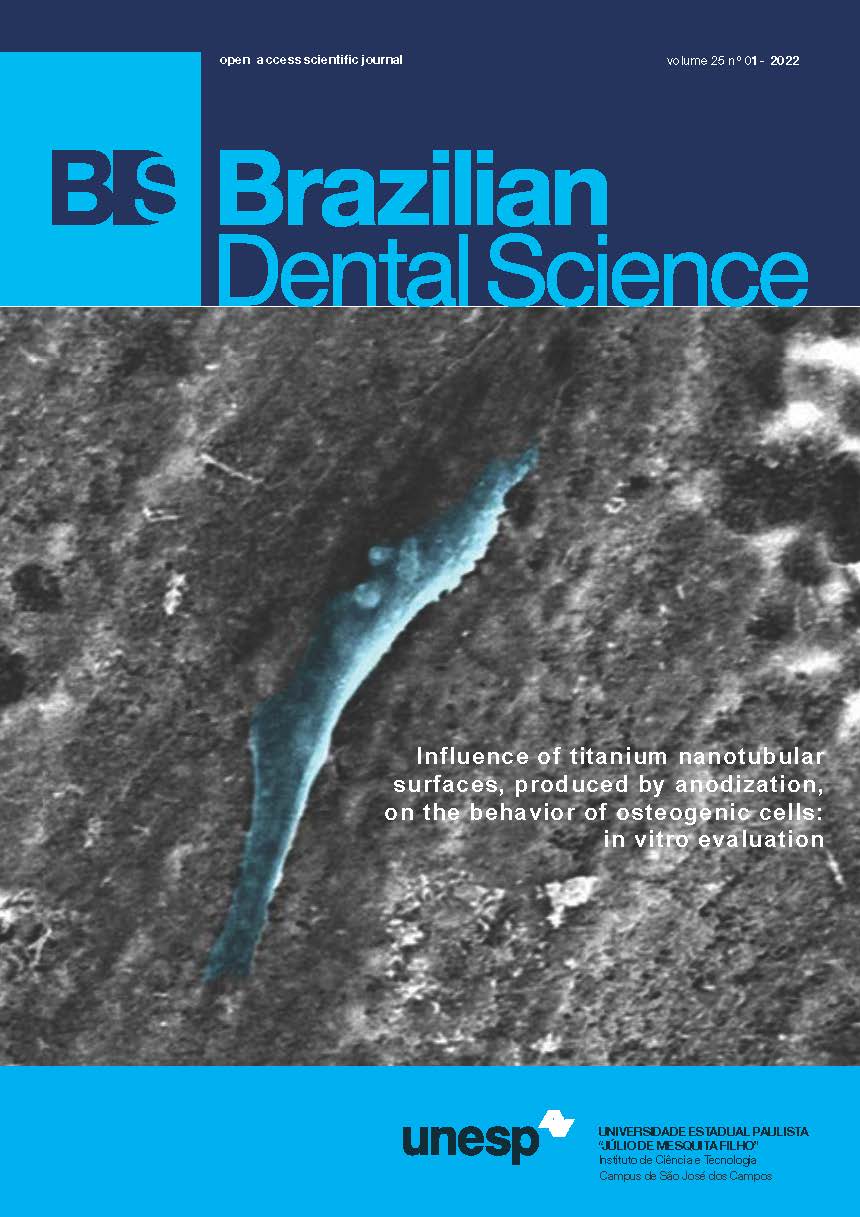Effect of MDP concentration and addition of iodonium salt on the dentin bond strength of experimental adhesives
DOI:
https://doi.org/10.4322/bds.2022.e2933Resumo
Objective: The aim was to evaluate the bond strength of six experimental adhesives containing binary or ternary
photoinitiator systems, associated with three different MDP concentrations (0-12wt%) after 12 months of
storage in distilled water. Material and Methods: Experimental adhesives were prepared with: bis-GMA, UDMA,
bis-EMA, TEGDMA, HEMA, BHT, and ethanol, containing binary (CQ/amine) or ternary (CQ/amine/DPIHFP
(diphenyliodonium hexafluorophosphate) – 0.5wt%) photoinitiator systems. It was added to this composition
0wt%, 6wt%, or 12wt% of MDP. The adhesive systems were applied following the etch-and-rinse protocol.
Transparent cylindrical molds were placed on the hybridized dentin, filled with composite resin and light-cured.
The specimens were stored in distilled water at 37oC for 24h or 12 months and submitted to a microshear bond
strength test (n=6). Data were analyzed by three-way ANOVA and Tukey’s test (a =5%). Results: For the binary
system, after 12 months of storage, all bond strength values were similar. Regarding bond strength degradation
over time, 6wt% and 12wt% MDP formulations showed more stable bond strength than 0wt% MDP. For the ternary
system, all formulations (0wt%, 6wt% and 12wt%) showed stable bond strength over time. Conclusion: For the
binary photoinitiator system, the 6wt% and 12wt% MDP concentrations were able to keep bond strength stable
over time, while for the ternary system, bond strength stability was achieved regardless the MDP concentration.
KEYWORDS
Dental bonding; Dental photoinitiators; Dentin-bonding agents; MDP.
Downloads
Downloads
Publicado
Versões
- 2022-03-29 (2)
- 2022-03-17 (1)
Como Citar
Edição
Seção
Licença
TRANSFERÊNCIA DE DIREITOS AUTORAIS E DECLARAÇÃO DE RESPONSABILIDADE
Toda a propriedade de direitos autorais do artigo "____________________________________________________________________" é transferido do autor(es) para a CIÊNCIA ODONTOLÓGICA BRASILEIRA, no caso do trabalho ser publicado. O artigo não foi publicado em outro lugar e não foi submetido simultaneamente para publicação em outra revista.
Vimos por meio deste, atestar que trabalho é original e não apresenta dados manipulados, fraude ou plágio. Fizemos contribuição científica significativa para o estudo e estamos cientes dos dados apresentados e de acordo com a versão final do artigo. Assumimos total responsabilidade pelos aspectos éticos do estudo.
Este texto deve ser impresso e assinado por todos os autores. A versão digitalizada deverá ser apresentada como arquivo suplementar durante o processo de submissão.




























